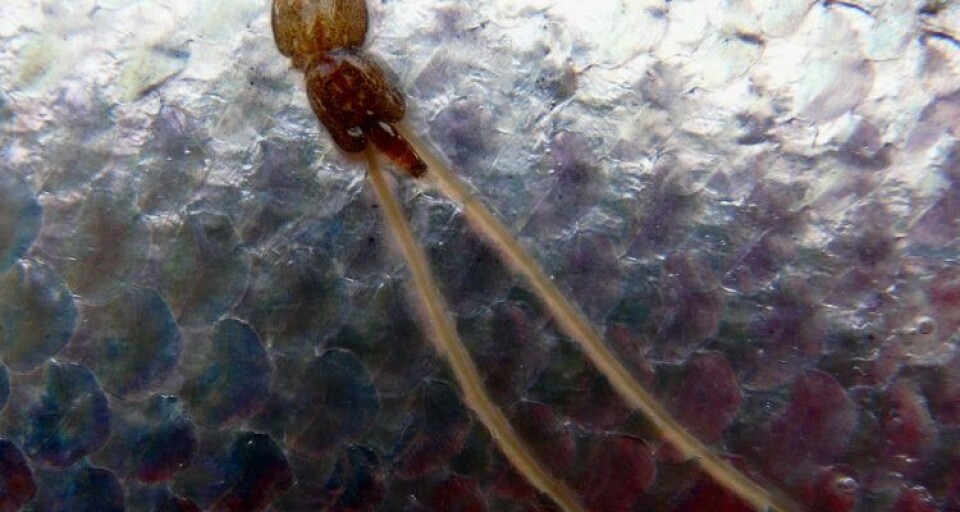
New apps will help in battle against lice
The Norwegian Veterinary Institute today launched two new online lice tools, one of which will make it possible to predict the amount of lice in the sea two to three weeks in advance.
Researcher Peder A Jansen and colleagues from the NVI presented the new apps at a breakfast meeting at the NCE Seafood Innovation Cluster headquarters in Bergen.

“There are two different apps,” said Jansen ahead of the launch. “The first is a map application that shows infection pressure of sea lice on the coast, this week, calculated one and two weeks ahead, and for the previous week. Here one can also get lists of how various localities are exposed to infection pressure. The calculations of infection pressure are made on the basis of reported lice, temperature and number of fish in the localities.”
These calculations are the product of work by the NVI, in cooperation with the Norwegian Computing Centre, whose aim has been to use local infection pressure to calculate the occurrence of lice.
Risk of infection
“The Veterinary Institute uses this model in many contexts, such as in the assessment of the effects of various measures against lice or in the assessment of risk of infection of wild salmon in the ‘traffic light’ context,” says Jansen.
The app is freely accessible to all interested parties, and the map will be updated every week.
The second application presented is a "lice calculator" which calculates the likely development of lice in salmon cages 1-3 weeks in the future, and relies on the input of infection pressure data into the app.
Jansen says that users must also have information about the current week’s lice population count, whether cleaner fish are used and how big the fish in the cage are.

“The development of this app is a product of an FHF (Norwegian Seafood Research Fund) project where one of the objectives was to develop models that can predict louse development based on the current situation,” explained Jansen.
Collaborating companies
The ideas have emerged and evolved in groups within "Research Group Lice" at the NVI and with partners in various projects. Jansen pointed to the Norwegian Computing Centre, NINA (the Norwegian Institute for Nature Research) and collaborating companies within the industry, such as Marine Harvest, Salmar and others.
“The model that underlies the map app has been dealt with in various projects over several years,” said Jansen. “It was, for example, published in 2014 and it has also previously been written about in Norwegian fish farming.
“It was Lars Qviller, who joined us quite recently, who initially programmed this as a web application.”
"Lice calculator" developed in the FHF project "Locality Model for Sea Lice," starting in 2014.
NVI wrote in a press release prior to the breakfast meeting that lice are aquaculture’s biggest challenge.
“Being able to deal with the infection pressure of the parasite is essential for further growth in the industry. The new tools to the Norwegian Veterinary Institute will allow management and other interested parties the opportunity for an advance notice of infection development,” they said.
Available to anyone
Jansen said the app had been tested by Marit Stormoen in Marine Harvest, Arnfinn Aunsmo in Måsøval Fisheries and Geir-Magne Knutsen in Bremnes Seashore.
“I hope and believe that the test users found it useful. The applications should now be available online for anyone,” he said.
Jansen said in conclusion that he hopes the apps can help to better understand how local infection pressure will affect lice development in the near future, so allow quicker engagement with situations where lice figures can get out of control.




















































